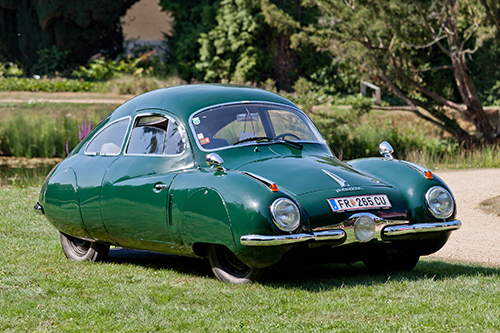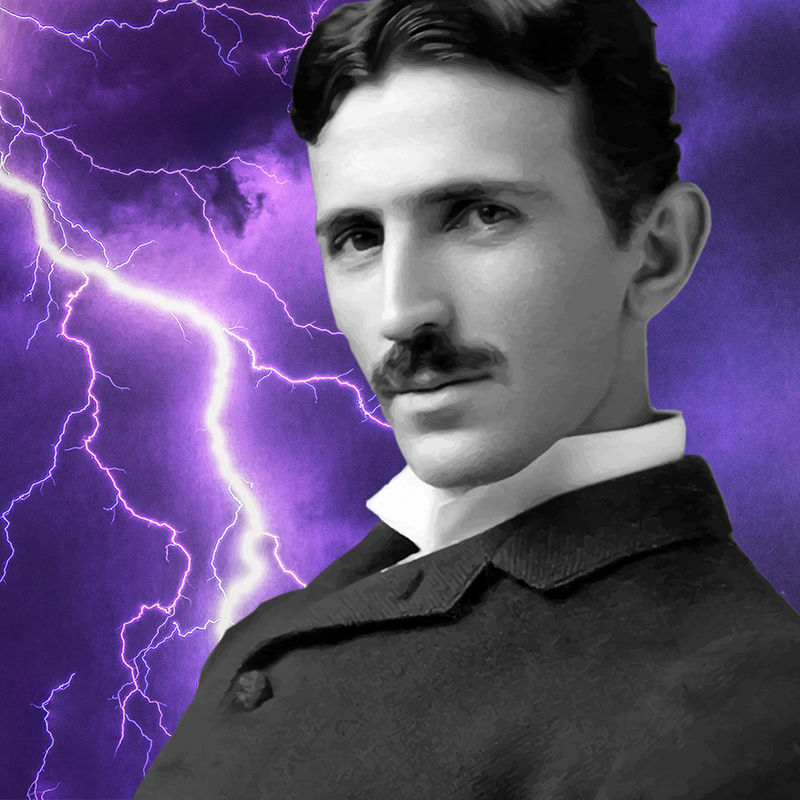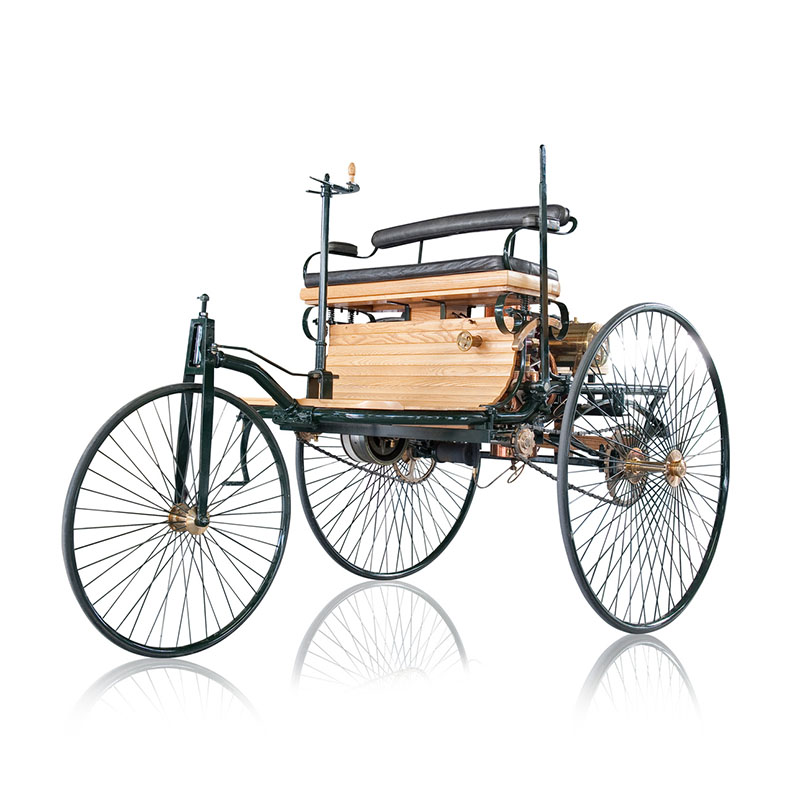The Opel RAK1 rocket car designed by engineer Kurt C. Volkhart caused a stir at the Opel racetrack in Rüsselsheim on April 11, 1928. It was based on the Opel 4/12 hp „Laubfrosch“ model and equipped with a propulsion system consisting of twelve rockets instead of a combustion engine. It was a sensation – and the beginning of rocket-powered space travel. Astronomer Max Valier and explosives expert Friedrich Wilhelm Sander were also involved in the project. Valier had been able to convince Fritz von Opel of the idea, who in turn enlisted Volkhart, his long-time opponent in many car races.
Volkhart, who was born in Düsseldorf in 1890, had developed and designed the rapid car. He originally came from an artistic background but was the only one in his family to choose a technical career. He was passionate about car design and car racing. He was a pilot in the First World War and was wounded in a crash. After the war ended, Volkhart worked for the then renowned car manufacturer Steiger where he soon enjoyed success with his improvements in automotive engineering. In 1922, Volkhart won the “Eifelrundfahrt”, one of the biggest motorsport events of the time, ahead of his club mate Alfred Noll and Rudolf Carracciola, who went on to become European champion.
The speedy Opel RAK1 rocket car
After he made the legendary presentation of his rocket car in 1928 and parted ways with Opel, Volkhart continued to tinker with his own model, the Volkhart-R1. The aerodynamically shaped vehicle was equipped with two seats and, like the RAK1, used single-use propellants from Sander. On November 25, 1928, Volkhart unveiled his vehicle to the public in a demonstration drive in Berlin.
By 1929, public interest in rocket-powered vehicles had waned. Volkhart was thus thwarted in his commitment to rocket technology – and turned his attentions back to motorsport and designing conventional vehicles. During the economic crisis, he performed as a wall-of-death rider at fairs to earn a living. When the Second World War ended, he was able to continue his work on a streamliner. His sports car is said to have been assembled in barracks in a quarry between Essen and Wuppertal and was completed at the end of 1947 as a lightweight aluminum body on a tubular steel grid frame. Its name, Volkhart V2 Sagitta, was apt: “Sagitta” comes from Latin and means “arrow”.
(Header Volkhart in his own vehicle on the AVUS racetrack, December 1928: Federal Archives image 102- 06949, Berlin, CC BY-SA 3.0 DE; detail V2 Sagitta: Cannoneer Photography, CC BY-SA 4.0; detail Volkhart with his own rocket car on the Nürburgring racetrack, April 1929: Federal Archives image 102-07588, CC BY-SA 3.0 DE)






